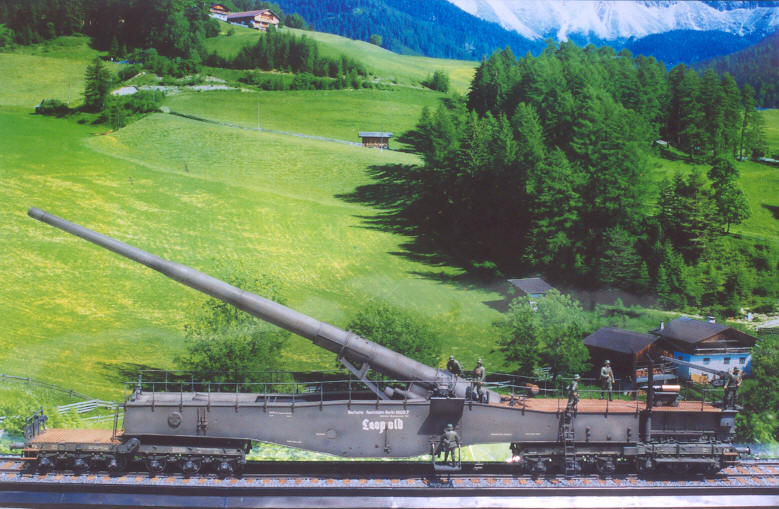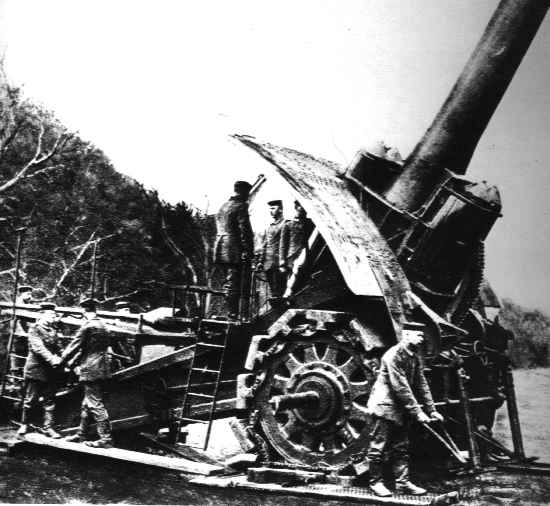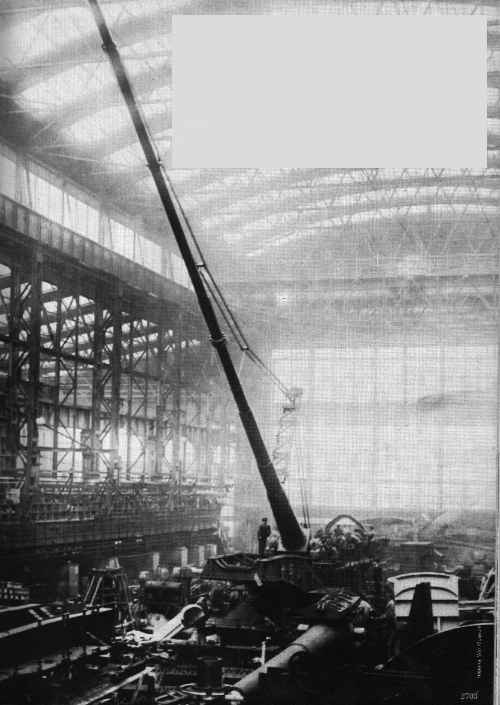Here’s some info on the Leopold which might answer some of your questions.
I just learned that the Leopold is not the longest gun with longest range of fire. Leopold is only 21m long, but the German WWI “Big Bertha” was much longer at 36m! and fired the longest range (120km or 76 miles). Read on :
German Railway Gun K5 (E) Leopold - Hasegawa’s 1/72 scale Mini Box Serie N0.28
History on 28cm K5 Railway Gun
The earliest railway artillery of record was employed in the Confederate Army in 1862. Experiments went on during the next 50 years, but there was little development till 1914. During World War I the Germans developed and employed a most unexpected long-range gun, the famous “Big Bertha”
The railway gun was a long-range gun with limited mobility which is generally carried on railways ramified over fortresses or special army bases. This railway gun had a larger caliber, a longer barrel, a heavier weight and an exceptionally longer range than field guns and mobile artilleries. It was concealed in secret camouflaged entrenchments or tunnels and carried to the firing place as the occasion demanded. Firing from a great distance could take the enemy
by surprise.
Despite numerous reconnaissance flight by the French during the shelling of Paris in 1918, the 21cm “Big Bertha” firing at a range of 76 miles (some 120 km) was never discovered.
Even after the war, the mystery that surrounded this long-range railway gun would not fade.
German adopted the method of setting a gun carriage on a firm frame attaching both a front and rear bogie truck for the long-range railway gun developed after World War I. As the load for one axle is limited, a number of axles can bear a far heavier gun, Therefore, the K5 railway
gun had 12 axles : 6 axles to both the front and rear truck (load for an axle ; 18 tons).
An ammunition wagon, covered car for personnel, covered car for equipment, etc. were usually attached to the two bogie trucks and a locomotive was attached to one side end. There were two firing types of railway gun : one firing in a stopping condition on the rails, and the other firing after stable operation with setting the frame on the turntable platform that was founded in a definite place.
The 21cm Bertha used in World War I was an epochal long-range gun of the latter type with a barrel of 36m on length and the longest range in the world (120 km). in 1935, the Germans began to re-arm and started on the design of a new type of railway gun with more mobility, making effective use of their experience with the “Big Bertha”. the main railway guns among the new types were the 24cm Theodor Bruno K (range : 20 km), the 28cm K5 E, the 38cm Siegfried K (55.7 km), and the 80cm Dora (47 km). It was the 28cm caliber class that brought power into full play among them, and especially the 28cm K5 became famous as the main force railway gun. In case where it was used as a fort gun that fires on enemy fleets off the coast,
what is known as coastal artillery, it was stationed on railways laid in a gallery along the quay. This way, they could avoid bombing by enemy planes and effectively watch over the movements of hostile crafts.
The project for the 28cm K5 was commenced secretly in 1934 and eight trail equipments were successfully used by the end of February 1940. By the end of the war, about 25 equipments had been built. As the tractor a diesel locomotive of 40 tons weight was used. The amount of shells loaded on the train was generally 113 in number, but considerable time was necessary for
charging and adjusting after firing. Operation of the gun was entirely electro-motive and during transportation the barrel was always in a horizontal condition.
Specifications :
Caliber … 28.3 cm
Overall Length of Barrel …21.539 m
Overall Length including
projecting rear Bogie …31.100 m
Maximum Elevation …50 degree
Weight in Action …218,000 kg
Weight of Carriage and Piece …209,550 kg
Muzzle Velocity 1,120 m/s
Range …59 - 62 km
Firing Interval … 8 shells/h
(7 minutes and 30 seconds /shell)


